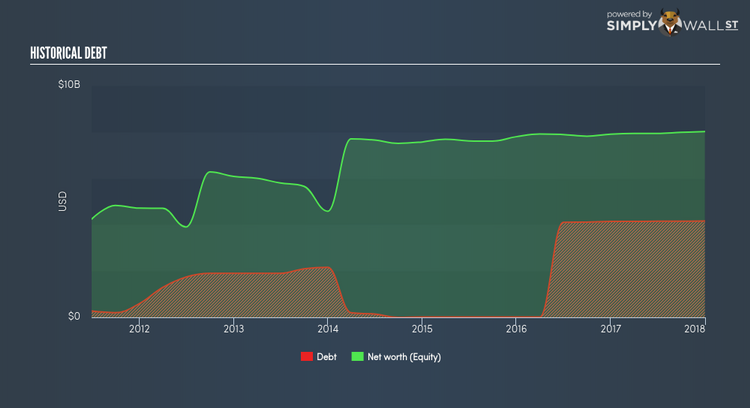What does Turquoise Hill Resources Ltd’s (TSE:TRQ) Balance Sheet Tell Us About Its Future?

Small-caps and large-caps are wildly popular among investors; however, mid-cap stocks, such as Turquoise Hill Resources Ltd (TSX:TRQ) with a market-capitalization of CA$7.87B, rarely draw their attention. However, history shows that overlooked mid-cap companies have performed better on a risk-adjusted manner than the smaller and larger segment of the market. Let’s take a look at TRQ’s debt concentration and assess their financial liquidity to get an idea of their ability to fund strategic acquisitions and grow through cyclical pressures. Note that this information is centred entirely on financial health and is a top-level understanding, so I encourage you to look further into TRQ here. Check out our latest analysis for Turquoise Hill Resources
Does TRQ generate an acceptable amount of cash through operations?
TRQ has sustained its debt level by about US$4.16B over the last 12 months made up of current and long term debt. At this stable level of debt, the current cash and short-term investment levels stands at US$1.44B for investing into the business. On top of this, TRQ has generated US$118.00M in operating cash flow in the last twelve months, leading to an operating cash to total debt ratio of 2.84%, meaning that TRQ’s operating cash is not sufficient to cover its debt. This ratio can also be a sign of operational efficiency as an alternative to return on assets. In TRQ’s case, it is able to generate 0.028x cash from its debt capital.
Can TRQ meet its short-term obligations with the cash in hand?
At the current liabilities level of US$503.47M liabilities, it seems that the business has been able to meet these obligations given the level of current assets of US$3.17B, with a current ratio of 6.29x. Though, anything about 3x may be excessive, since TRQ may be leaving too much capital in low-earning investments.
Can TRQ service its debt comfortably?
TRQ is a relatively highly levered company with a debt-to-equity of 51.86%. This is not uncommon for a mid-cap company given that debt tends to be lower-cost and at times, more accessible. We can test if TRQ’s debt levels are sustainable by measuring interest payments against earnings of a company. Ideally, earnings before interest and tax (EBIT) should cover net interest by at least three times. For TRQ, the ratio of 7.42x suggests that interest is appropriately covered, which means that lenders may be inclined to lend more money to the company, as it is seen as safe in terms of payback.
Next Steps:
At its current level of cash flow coverage, TRQ has room for improvement to better cushion for events which may require debt repayment. However, the company will be able to pay all of its upcoming liabilities from its current short-term assets. I admit this is a fairly basic analysis for TRQ’s financial health. Other important fundamentals need to be considered alongside. You should continue to research Turquoise Hill Resources to get a more holistic view of the stock by looking at:
Future Outlook: What are well-informed industry analysts predicting for TRQ’s future growth? Take a look at our free research report of analyst consensus for TRQ’s outlook.
Historical Performance: What has TRQ’s returns been like over the past? Go into more detail in the past track record analysis and take a look at the free visual representations of our analysis for more clarity.
Other High-Performing Stocks: Are there other stocks that provide better prospects with proven track records? Explore our free list of these great stocks here.
To help readers see pass the short term volatility of the financial market, we aim to bring you a long-term focused research analysis purely driven by fundamental data. Note that our analysis does not factor in the latest price sensitive company announcements.
The author is an independent contributor and at the time of publication had no position in the stocks mentioned.

